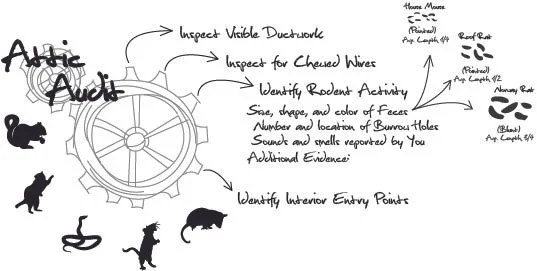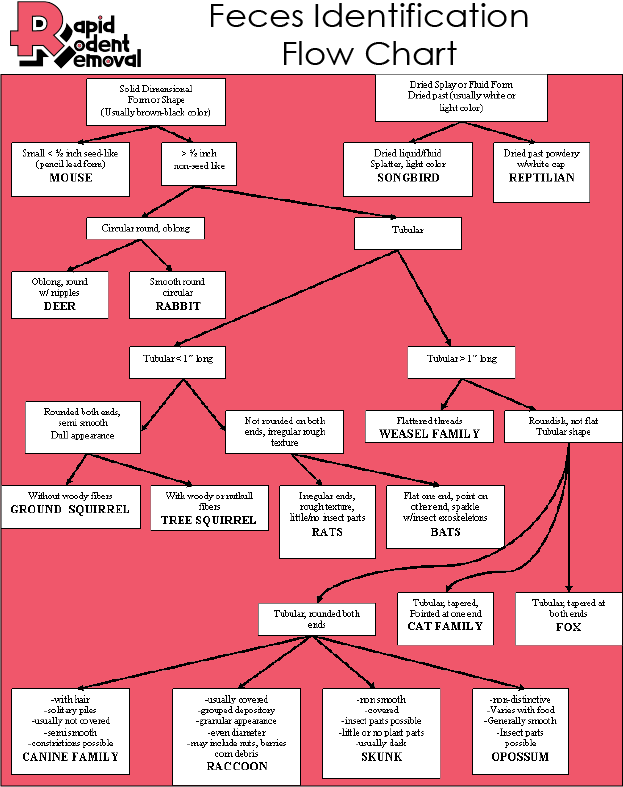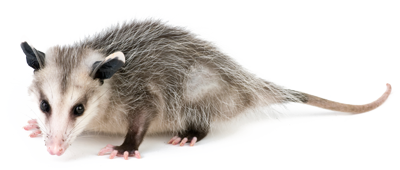Blank heading
For many people, the image of a squirrel holding an acorn is iconic. But nuts aren’t just a favorite snack—they’re an evolutionary necessity. Squirrels’ strong teeth, exceptional memory, and instinctual hoarding behavior are all adaptations to a nut-based diet. However, the reality of their nut consumption is far more diverse and regionally influenced than the stereotype suggests.
Why Nuts Matter
Nuts are calorie-dense, protein-rich, and contain healthy fats, making them ideal fuel for active squirrels, especially in preparation for winter. Unlike other food sources that may spoil or disappear with the seasons, many nuts can be stored long-term in underground caches or tree cavities. This ability to store and retrieve nuts plays a vital role in a squirrel’s survival.
Types of Nuts Commonly Eaten by Squirrels
Squirrels exhibit impressive selectivity and skill when foraging for nuts. Depending on the environment, they consume:
Acorns (Oak Trees): A staple in North American diets, especially for eastern gray squirrels. They eat both red and white oak acorns, though they tend to store red oak acorns for later due to their lower perishability.
Walnuts: Black walnuts and English walnuts are high in fats and very desirable. Squirrels often crack them open by gnawing at the ends or smashing them against hard surfaces.
Hazelnuts (Filberts): Eaten whole when available in temperate woodlands.
Beechnuts: Found in mature forests, beechnuts are favored for their size and flavor.
Pine Nuts: These are hidden inside cones, which squirrels skillfully deconstruct, scale by scale.
Pecans and Hickory Nuts: Though harder to open, squirrels will invest effort due to the reward of high-energy content.
Hoarding Behavior
Tree squirrels, such as gray squirrels, engage in a practice called "scatter hoarding." They bury individual nuts across large areas, relying on spatial memory to retrieve them later. Some of these forgotten nuts germinate, inadvertently supporting forest regeneration.
Red squirrels, in contrast, use a "larder hoarding" approach, storing large amounts of food in a single central cache, often inside a hollow log or tree.
Nut Selection Techniques
Squirrels perform taste and weight assessments using their mouths and paws. They instinctively test nuts by shaking them or biting into them lightly to determine quality before caching or consuming.
Nutritional Impact
Nuts provide:
Healthy fats for brain development and energy
Proteins for growth and muscle support
Minerals like phosphorus, magnesium, and calcium
However, excess consumption—particularly in captive squirrels—without balance from other food sources can lead to calcium deficiency, especially if phosphorus intake is high.
In short, squirrels and nuts are an evolutionary match made in nature’s pantry. But they’re far from a squirrel’s only dietary choice.
Fruits and Vegetables in a Squirrel’s Menu
While nuts get most of the attention, fruits and vegetables make up a surprisingly large portion of a squirrel’s diet, especially during warm months. Wild and urban squirrels alike take full advantage of seasonal produce, showcasing their omnivorous adaptability.
Wild Fruits Favored by Squirrels
Squirrels consume many types of fruits found in forests, meadows, and even backyard gardens:
Berries: Blackberries, raspberries, blueberries, and mulberries are rich in antioxidants and sugars.
Wild Grapes: Found in forested areas, grapes are moisture-rich and packed with quick energy.
Persimmons and Figs: In southern regions, squirrels gorge on ripe fruits when available.
Apples and Pears: Windfall fruit is often scavenged from orchards or under trees.
Stone Fruits: In areas with wild or cultivated cherries and plums, squirrels will often eat the fruit and discard the pits.
Vegetables and Greens
Although less commonly sought out, squirrels will eat:
Leafy greens: Dandelion leaves, plantain leaves, and even lettuce from gardens.
Corn: A favorite when found in gardens or fields. Squirrels eat both kernels and immature ears.
Pumpkins and Squash: They chew through the skin to access seeds and pulp.
Tomatoes, Peas, Beans: Common targets in backyard gardens.
How They Forage
Squirrels use sight and smell to identify ripeness. They prefer soft, ripe fruits for ease of consumption. They’re also adept at climbing fruit trees or navigating vines and garden fences.
Urban Foraging
Urban squirrels often sample fruit-bearing ornamental trees such as:
Crabapples
Ornamental cherries
Magnolia pods
And in backyards, they have been known to nibble on:
Strawberries from pots
Cucumbers and peppers
Seedlings and sprouts
Nutritional Contributions
Fruits and vegetables provide:
Natural sugars for immediate energy
Fiber to aid digestion
Vitamins A, C, and K for immunity and metabolism
However, too much fruit—especially sugary fruit—can lead to digestive upset. Wild squirrels tend to balance fruit intake with fibrous foods naturally.
Squirrels are opportunistic eaters. They’ll gladly raid your garden for a sweet snack, but they still return to the forests for their balanced, varied diet.
Insects, Bird Eggs, and Oddities — The Unexpected Foods Squirrels Consume
Most people don’t associate squirrels with meat, but these seemingly innocent creatures occasionally tap into their omnivorous instincts. While primarily herbivores, squirrels will eat insects, small animals, and other surprising foods when the opportunity or need arises.
Insect Consumption
Especially during protein-scarce seasons like spring, squirrels may eat:
Grasshoppers and crickets
Caterpillars
Ants and larvae
Beetles and grubs
Spiders
Insects are typically consumed while foraging in leaf litter or under logs. Ground squirrels, in particular, are efficient bug hunters.
Eggs and Nestlings
Tree squirrels have been documented raiding nests for:
Songbird eggs
Baby birds (especially when nests are unguarded)
While this behavior is rare and opportunistic, it’s more common in nutrient-stressed individuals or when other protein sources are scarce.
Fungi
Squirrels, particularly flying squirrels, consume fungi:
Mushrooms, truffles, and morels
Even mildly toxic fungi that other animals avoid
They have developed some resistance to fungal toxins and help spread spores throughout forests.
Bones, Shells, and Antlers
Squirrels chew on:
Animal bones
Turtle shells
Shed antlers
This isn’t for food but for calcium and tooth maintenance. Constant gnawing keeps their ever-growing incisors in check.
Garbage and Manmade Food
Urban squirrels sometimes eat:
French fries
Pizza crusts
Chicken nuggets
Candy or cookies
While not natural, these high-calorie foods are scavenged from trash and bird feeders and often consumed without hesitation—often to the squirrel’s detriment.
Squirrels are survivalists. Their dietary oddities might be gross or surprising, but they speak to how resourceful and evolutionarily advanced these animals truly are.
How Squirrel Diets Change Throughout the Year
Just like humans crave different foods depending on the weather, squirrels adapt their diets based on seasonal availability and nutritional needs. These changes help ensure survival and reproductive success.
Spring: Recovery and Growth
After winter torpor or hibernation, squirrels emerge needing:
Protein: Insects, buds, bird eggs
Fresh greens: Young shoots, dandelion leaves, clover
Early fruits and flowers
This season is marked by high activity as squirrels rebuild fat and prepare for breeding.
Summer: Foraging and Fat Building
This is a time of abundance. Squirrels eat:
Berries and fruits
Nuts beginning to ripen
Vegetables and garden plants
They begin caching behavior mid-summer, depending on food stores for the coming leaner months.
Fall: Peak Foraging and Hoarding
Fall is a frantic season as squirrels collect:
Acorns, walnuts, hickory nuts, pine nuts
Mushrooms and fungi
They spend hours each day hiding food in various locations. Their memory sharpens, and they become more defensive of territories.
Winter: Minimal Activity and Cache Use
Depending on the species:
Tree squirrels remain active and rely on buried food stores.
Ground squirrels hibernate and rarely emerge.
Flying squirrels stay in tree hollows and come out briefly at night to eat cached fungi and nuts.
Their winter diet is mostly dry—nuts, seeds, and cached items. If caches are depleted, they may raid bird feeders or trash bins.
Seasonality shapes every part of a squirrel’s life, from appetite and behavior to reproduction. Their dietary flexibility is a crucial survival tool in fluctuating environments.
Tree Squirrels vs. Ground Squirrels — Dietary Differences
While most people are familiar with tree-dwelling squirrels, many are surprised to learn that ground squirrels are a distinct group with notable differences—including what they eat.
Tree Squirrels
Includes species like:
Eastern Gray Squirrel
Fox Squirrel
Red Squirrel
Diet Highlights:
High in nuts and seeds
Fruits, tree buds, bark
Occasional insects and fungi
Cache food individually across wide areas
Forage mostly in tree canopies and forest floors
Tree squirrels are agile climbers and often nest in trees. Their diet is largely arboreal in origin.
Ground Squirrels
Includes species like:
California Ground Squirrel
Thirteen-Lined Ground Squirrel
Rock Squirrel
Diet Highlights:
Grasses and seeds
Insects and small invertebrates
Fruits and agricultural crops
Occasionally bird eggs or reptiles
They’re known to raid gardens and fields and will eat more animal protein than tree squirrels. Their diet is heavily influenced by the immediate ground-level environment.
Key Differences
Aspect
Tree Squirrels
Ground Squirrels
Nesting
Trees
Burrows
Protein intake
Low
Moderate to High
Foraging zone
Trees and canopy
Ground level
Diet variation
Seasonal hoarding
Opportunistic grazing
Winter behavior
Active
Often hibernates
The dietary differences between these two types of squirrels underscore how evolution has adapted them to different niches and food sources.
Flying Squirrels and Their Unique Dietary Preferences
Flying squirrels, unlike their more grounded cousins, are nocturnal gliders with distinctive foraging behaviors. Their diet, while overlapping in many respects with tree and ground squirrels, also reflects their unique lifestyle and nighttime activity.
A Nocturnal Appetite
Flying squirrels are active at night, which changes both how and what they eat. Their nighttime foraging helps them avoid predators and competition while accessing food that other squirrels may overlook. Their large eyes adapted for low light aid in identifying edible plants, insects, and fungi.
Diet Overview
The diet of flying squirrels is highly varied and includes:
Nuts and seeds: Acorns, beechnuts, hazelnuts, pine seeds
Fruits and berries: Ripe wild berries, grapes, and persimmons
Fungi: They have a surprising fondness for mushrooms, including truffles
Lichens and moss: Found on tree bark, especially in coniferous forests
Bird eggs and nestlings: Opportunistic protein sources
Tree sap: Especially during early spring
Role of Fungi in Their Diet
Flying squirrels are some of the few mammals that consume and help disperse fungal spores, particularly hypogeous fungi like truffles. This symbiotic relationship aids forest health by spreading mycorrhizal fungi that support tree root systems.
Foraging Behavior
They travel across tree canopies gliding from branch to branch, sometimes covering distances over 100 feet. They prefer foraging in mature forests where food is abundant and gliding is safer. Their excellent memory helps them return to previously found food sources.
Nest and Feeding Sites
Flying squirrels build nests in tree cavities and will create food caches nearby. Because they can’t hoard large amounts like other squirrels, they eat smaller amounts more frequently, often returning to reliable sites multiple times in a night.
Differences Between Northern and Southern Species
Northern flying squirrels (Glaucomys sabrinus): Found in boreal forests, they eat more fungi and lichens.
Southern flying squirrels (Glaucomys volans): Found in hardwood forests, they consume more nuts, fruit, and insects.
Understanding the dietary habits of flying squirrels provides insight into their role as ecological stewards and the challenges they face due to habitat loss.
Urban Squirrels: Dumpster Diving and Human Food Reliance
Urban environments offer squirrels a completely different buffet than their wild habitats. City-dwelling squirrels adapt rapidly, altering their foraging patterns, diet, and even behavior.
Food Sources in the City
In the absence of a forest floor, squirrels in parks, backyards, and neighborhoods consume:
Discarded fast food (fries, bread, pizza crusts)
Pet food from outdoor bowls
Birdseed from feeders
Garden produce (tomatoes, squash, corn)
Packaged snacks from open trash cans
They are notorious for digging into bins or climbing into bird feeders meant for smaller birds.
Adaptations for City Life
Squirrels in urban zones tend to:
Become bolder around humans
Have reduced fear of vehicles and pets
Scavenge during both day and night
These behaviors expose them to new dangers, including traffic, poisoning, and diseases.
Health Impacts
Eating processed food impacts squirrel health just like it would a human’s:
Obesity: Less physical activity plus calorie-dense food
Dental issues: Sugar and starches rot teeth
Vitamin deficiency: Lack of natural nutrients
Many wildlife experts discourage feeding squirrels human snacks, though unfortunately, they’re often irresistible and accessible.
Feeding Habits in Public Parks
In large cities like New York or Chicago, squirrels are semi-dependent on human feeding. While it may seem kind, this habit:
Encourages overpopulation
Disrupts natural food cycles
Reduces fear of humans, increasing conflict
Urban squirrel diets are a testament to their adaptability—but not always to their benefit.
Chapter 10: What Baby Squirrels Eat: Diet During Development
(Approx. 1,100+ words)
Baby squirrels, also called kits or pups, are born hairless, blind, and fully dependent on their mother. Their nutritional needs vary by stage of development.
Stage 1: Nursing (Birth to 6-8 weeks)
Exclusive diet: Mother's milk
Rich in fats and proteins, squirrel milk sustains rapid growth
Babies nurse frequently, sometimes every few hours
Orphaned babies need specialized formulas (e.g., puppy milk replacement)
Stage 2: Weaning (6–10 weeks)
Transition phase: Begin nibbling soft solids
Foods introduced: mashed fruit, softened nuts, sweet potato, cooked carrots
Still reliant on mother’s milk, but with increasing independence
Stage 3: Post-Weaning (10–12+ weeks)
Juvenile diet: Similar to adult squirrels
Gradually introduced to nuts, seeds, and wild foraging
Require high-calorie food for energy as they learn survival skills
Hand-Rearing Considerations
If you're caring for an orphaned squirrel:
Never feed cow’s milk—it's fatal to squirrels
Keep warm: Baby squirrels cannot regulate temperature
Gradual introduction to solid food is key
Ensure calcium intake to prevent metabolic bone disease
Proper nutrition early in life ensures healthy bones, fur, and development. Dietary errors can lead to deformities or early death.
Feeding Pet Squirrels: Nutrition, Safety, and Common Mistakes
Keeping a squirrel as a pet—while legal in some places—is a responsibility that requires deep understanding of their nutritional needs.
Core Diet
Nuts (in shell): Hazelnuts, almonds, walnuts (unsalted, raw)
Fresh produce: Apple slices, leafy greens, carrots, sweet potato
Protein sources: Dried mealworms, boiled egg pieces (occasionally)
Calcium: Essential! Use cuttlebone or reptile calcium supplements
Avoid these toxic or harmful foods:
Chocolate
Avocados
Onion and garlic
Processed junk food
Dairy
Bread (especially moldy)
Feeding Tips
Offer a rotating variety to mimic wild diets
Use puzzle feeders to stimulate natural foraging instincts
Provide gnawing objects to manage tooth growth
Fresh water should always be available in a shallow dish
Common Mistakes
Overfeeding nuts: Can cause obesity and calcium loss
Ignoring calcium: Leads to weak bones and seizures
Feeding too many fruits: Sugar imbalance
Inadequate stimulation: Boredom can cause stress-eating
Ethical Considerations
Not all regions allow pet squirrels, and many wildlife rehabilitators advise against long-term captivity unless the squirrel cannot be released.
If you do choose to keep one, consult an exotic animal vet regularly and always prioritize their mental and physical health.
All About Animals …
Suspendisse nec congue purus. Aenean eu justo sed elit dignissim aliquam. Suspendisse nec congue purus. Class aptent taciti sociosqu ad litora torquent per conubia nostra, per inceptos himenaeos.
RATS
SQUIRRELS
RACCOONS
OPOSSUMS
SNAKES
BATS
WILDLIFE REMOVAL
articles:
What does a rat nest look like ?
What is a Squirrel King










